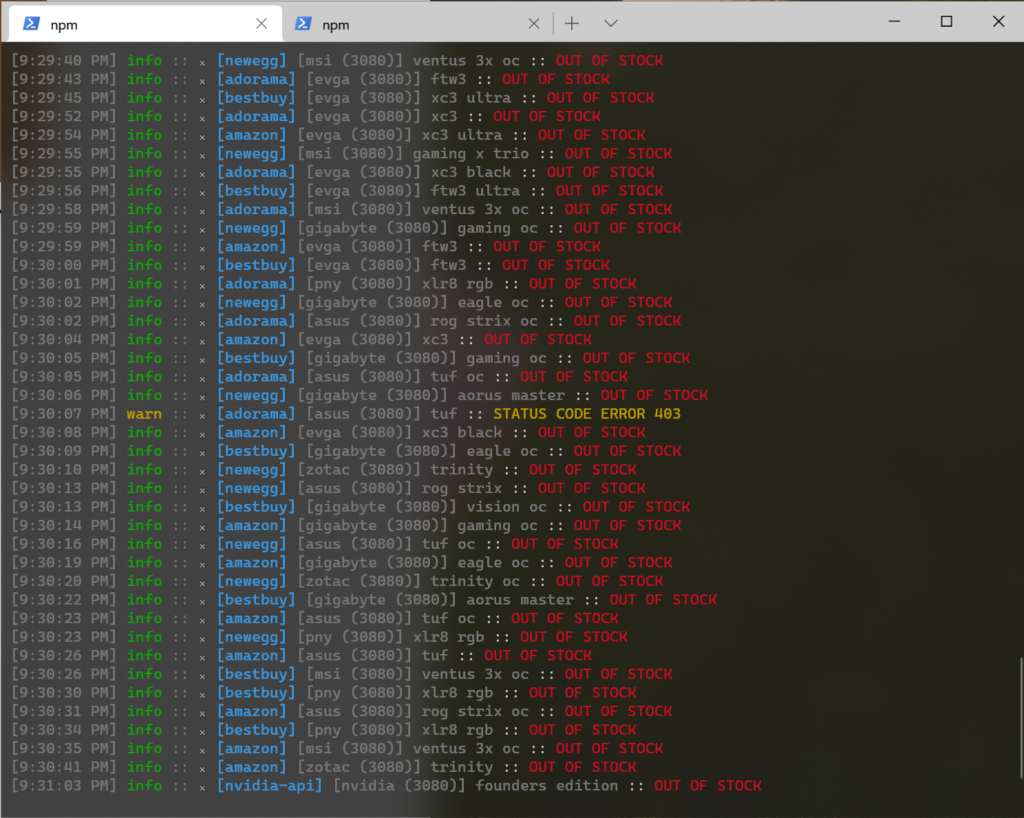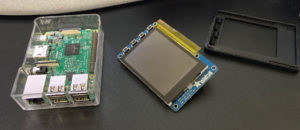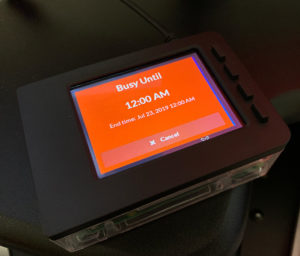I recently decided to build a new desktop computer for a new hobby that requires a powerful Windows-only computer. I thought I would spend 1-2 weeks researching, and then I should be good to buy and be done within three weeks. Was I wrong?!
Read full post… “The Bots are Here!”Author: farhan
CV19Assist Effort
In March of this year (2020), when the Coronavirus disease (COVID-19) pandemic was getting into full flux in the US, I, along with other volunteers, started an initiative to help with grocery and other essential item deliveries for at-risk population. With volunteer developers’ help, we launched right away. Later, we successfully concluded this initiative at the end of May once commercial services and grocery stores caught up to the delivery demand surge. This page hosts the last remnants of that effort, and the cv19assist.com domain now redirects to this page.
See further details on the project page.
MacBook Pro Wireless Roaming
It has been a while since I have had to set up a new MacBook Pro so I forgot about all the small things that I had changed over the past few years. I have some interference issues at home that I am still trying to resolve, but in the meanwhile I set up a second slightly older access point that I had lying around. I noticed that my MacBook Pro wasn’t switching when it got closer to the second access point (AP).
Read full post… “MacBook Pro Wireless Roaming”Tesla Autopilot’s Odd Behaviors
I couldn’t resist the Tesla fever and finally took the plunge a few months ago. Since then, I have been absorbing the Tesla ecosystem and observing everything that it has to offer. I have been especially intrigued by the Autosteer (part of “Autopilot”) functionality because that’s one of the game-changing features that Tesla is offering. Here are a few odd behaviors of the system that I have observed so far. Note that most of the Autopilot features are currently in Beta, so I am always careful when using it, and I am also expecting that Tesla will work out these kinks as it continues to improve the system.

Entriway – Overkilling it with a Raspberry Pi
As a “prosumer” I have liked the Ubiquiti equipment because it’s not too expensive and at the same time provides advanced functionality that I like to tinker with. After switching to an EdgeRouter, I recently swapped one of my two access points with the UniFi nanoHD access point. The EdgeRouter works independently, but the UniFi HD provides a lot more options when controlled using the UniFi Controller. For this, I had a Raspberry Pi 3 lying around so instead of getting the UniFi Cloud Key, I decided to set up the controller on the Raspberry Pi.
I work from home most of the days and generally keep my office door closed to keep distractions to a minimum. I also tend to be on video and audio calls quite a bit. When I am talking on the calls, then it is easy for my family to know not to come in, but when I am listening, then they obviously cannot tell. There have been times when I am on video calls and have had a family member walk in, not knowing. Those can be awkward at times.
Now, what does this all have to do with the Raspberry Pi? In addition to the Raspberry Pi, I also had a 2.8″ Adafruit PiTFT lying around that I did not end up using in another project. I was planning on having the Raspberry Pi running all day for the UniFi Controller anyway, so why not give it another purpose? So, I decided to create a small digital sign that I could control remotely and put it outside my door for people to know what I was up to. Overkill? Why, yes it is, but it was also fun. Actually, the real overkill would have been this solution running on a rechargeable battery! I called this the “Entriway.”
Read full post… “Entriway – Overkilling it with a Raspberry Pi”How to try out macOS Mojave without messing with your primary install
I am generally excited to try out new software. This was the case when Apple announced the public betas for macOS Mojave recently. I was excited to try out the public beta, but I didn’t want to mess with my primary setup. Unfortunately, my older spare MacBook Pro is no longer supported by Mojave so my only option was using my primary MacBook Pro, which was a little scary. After looking around for a little bit, I learned that I could install Mojave on a new partition without messing much with the existing install.
Read full post… “How to try out macOS Mojave without messing with your primary install”Getting to a Shell in Alpine Linux on Kubernetes
I have lately been experimenting with Kubernetes and containers. As I was playing around with a few configurations I had the need for exploring a container’s contents interactively. Kubernetes’s dashboard has functionality to get into a container, but it assumes that you are using the bash shell. Unfortunately, any Apline Linux-based container images do not have bash installed so we have to resort to other options to get access.
Alpine uses the busybox provided ash shell (which basically a symbolic link to /bin/busybox). To get to the prompt you have to run.
kubectl exec <POD_NAME> /bin/ash -it
Ansible/win_get_url downloading 1KB file?
I have recently been looking at using Ansible for managing some Windows-based web servers. Fortunately, I was able to get the authentication configured properly, but as soon as I got to downloading PHP, the Ansible win_get_url module started behaving oddly. It downloaded some other files as I would have expected, but it would download the PHP distributable as a 1KB file.
Apache Benchmark (ab) tool acting slowly?
I recently needed to do some informal HealthDecision API concurrent session testing. I decided to try out the Apache benchmarking tool (ab). Given that I needed something quick, I started a new HealthDecision session in the browser and used Chrome Developer Tools’ copy as cUrl functionality to get the headers and the POST data. This obviously worked on the command line, but each request was taking close to six seconds when I used ab!
The request something like this…
ab -n 1 -c 1 -H 'X-Session-ID: XXXXXX' -H 'User-Agent: curl/Farhan testing'-H 'Connection: keep-alive' -H 'X-Session-Passphrase: XXXXXXX' -H 'X-API-Key: XXXXXXXXXXXXX' -T 'application/json' -p post-data.txt 'https://dev.healthdecision.org/...'
It didn’t make much sense at first sight because the exact same request was less than half a second every time. I tried running with output turned on (-v 4) and could see that it was waiting after it received the response from the server. After some more troubleshooting, I finally realized that it was the keep-alive header causing ab to wait for the connection to close!
Lesson learned, pay very close attention to the headers.
How to split chunks in Webpack 4.0

Webpack 4.0 was released a few days ago. I happened to be in the middle of updating an older app and decided to jump to this version; especially because the webpack team is claiming a significant improvement in compile times (up to 98%!). Read full post… “How to split chunks in Webpack 4.0”




